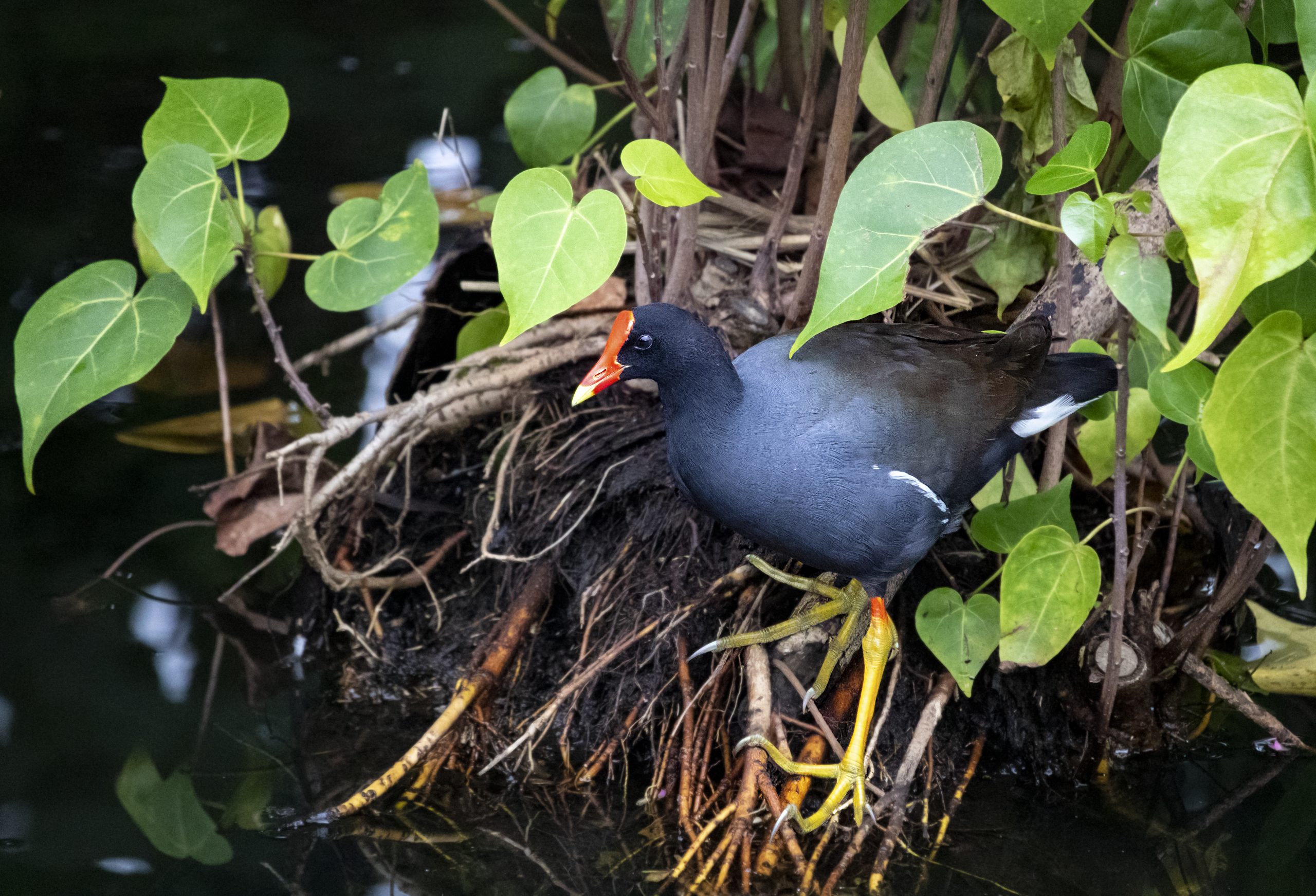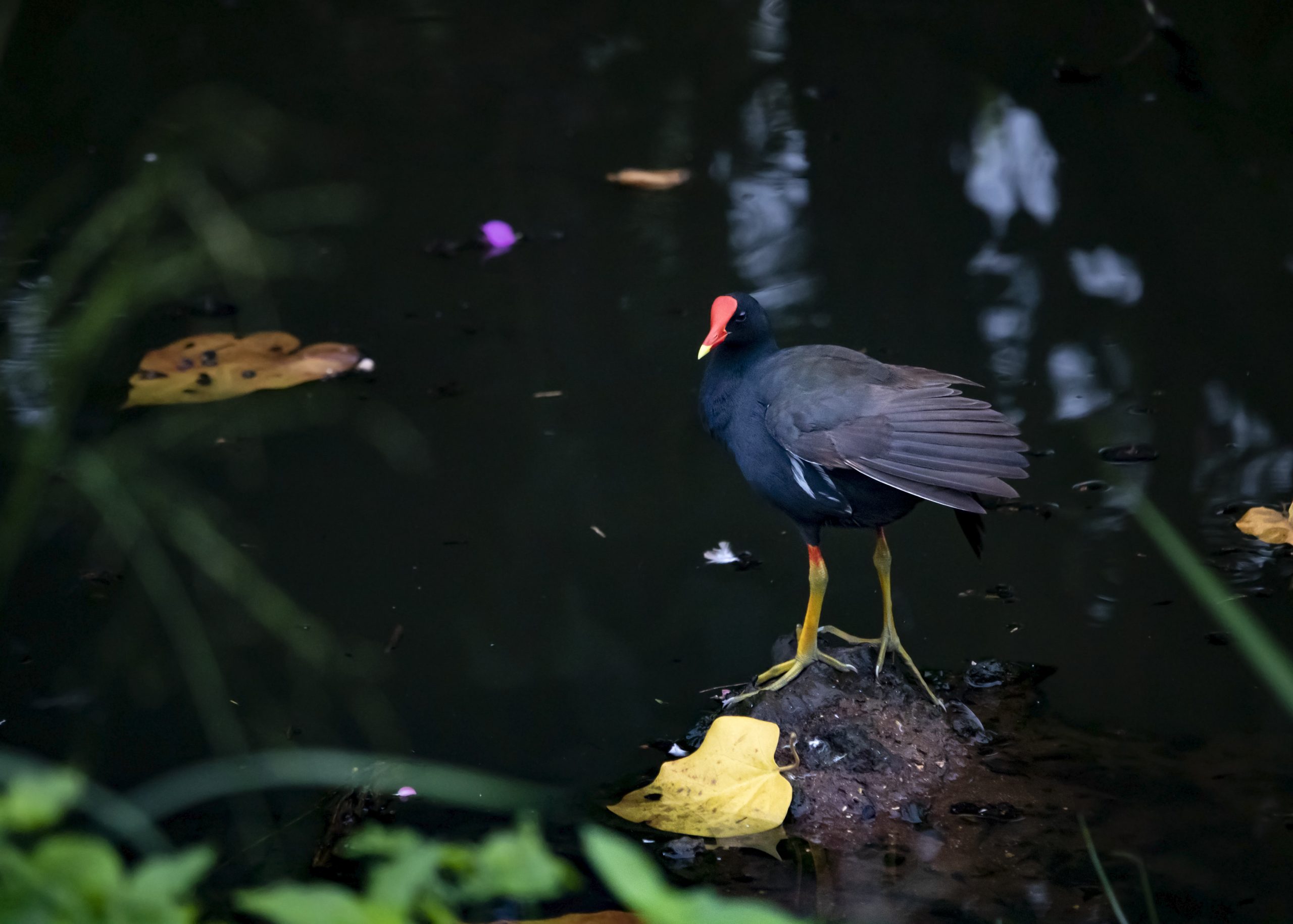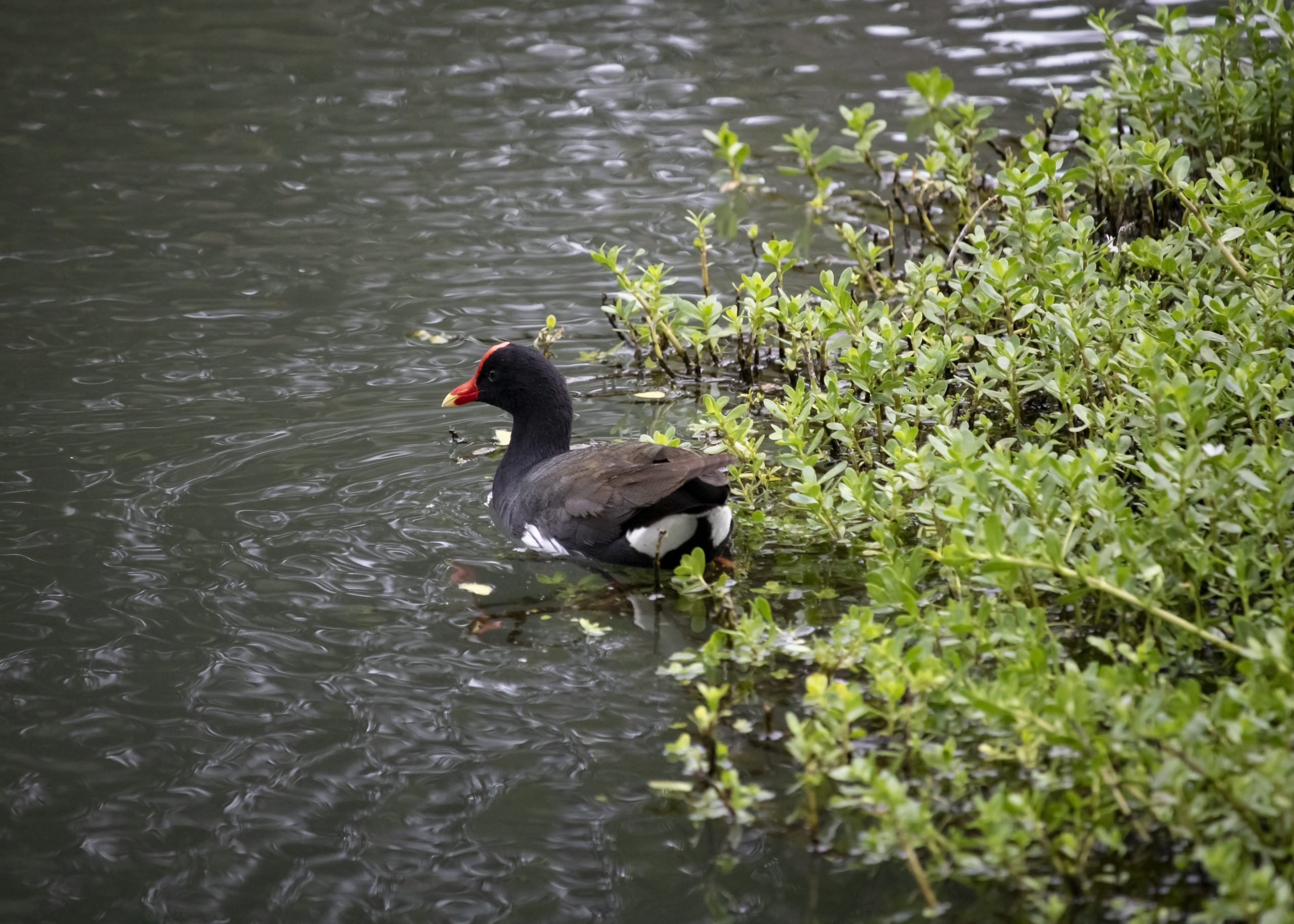ʻAlae ʻUla

Names
- ʻŌlelo Hawaiʻi: ‘Alae ‘ula
- Common: Hawaiian moorhen, Hawaiian gallinule
- Scientific: Gallinula galeata sandvicensis, Gallinula chloropus sandvicensis
Song
Conservation Status
- Federally Listed as Endangered
- State Listed as Endangered
Species Information
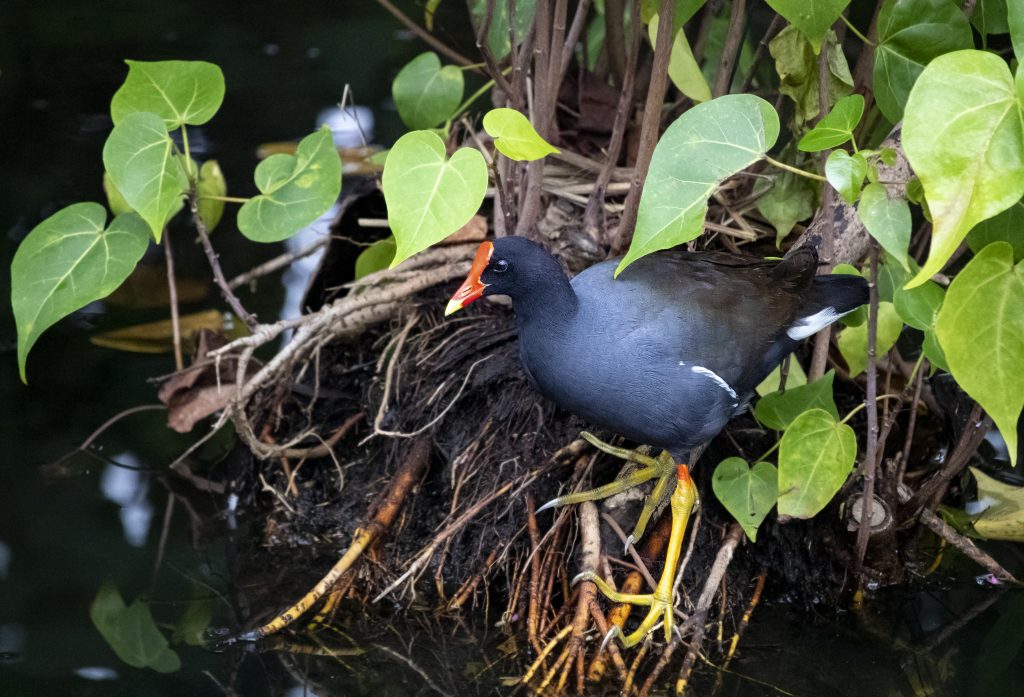
ʻAlae ʻula. PC: Keri Rouse
The ‘alae ‘ula or Hawaiian moorhen is a small, striking waterbird (Family: Rallidae) and is one of 12 recognized subspecies. ‘Alae ‘ula is endemic to Hawai‘i and is very similar to its North American relative in appearance; adults are black above and dark slate blue below, with a white stripe on their flanks and a prominent red shield over their red and yellow bill. Feet are lobed rather than webbed, and males are larger than females. In Hawaiian mythology, a moorhen brought fire to humans, which explains the red on its forehead, a symbol of the scorching from the fire. The species’ life history and breeding biology are poorly known. It uses a variety of freshwater habitats and can be somewhat secretive, although it is often seen swimming across open water. ‘Alae ‘ula are opportunistic feeders, and their diet likely varies with habitat, but includes algae, grass seeds, plant material, insects, and snails. Nesting habitat is restricted to areas with standing freshwater less than 61 centimeters (24 inches) deep with dense emergent vegetation. Nesting occurs year-round, but mostly occurs between March and August. Nesting phenology is apparently tied to water levels and the presence of appropriately dense vegetation. Platform nests are constructed in dense vegetation over water. The particular species of emergent plant used for nest construction is not as important as stem density and vegetation height. Five to six eggs are laid and hatch after 22 days. Although chicks are precocial and can swim shortly after hatching, they are dependent on their parents for several weeks.
Distribution
‘Alae ‘ula generally occurs in wetland habitats below 125 meters (410 feet) elevation on the islands of Kaua‘i and O‘ahu, although there have been reports from Ke‘anae Peninsula on Maui and from the island of Hawai‘i. On Kaua‘i, the largest populations occur in the Hanalei and Wailua river valleys, but they also occur in irrigation canals on the Mānā Plains of western Kaua‘i and in taro fields. On O‘ahu, the species is widely distributed with most birds found between Hale‘iwa and Waimanalo; small numbers occur at Pearl Harbor and the leeward coast at Lualualei Valley. Historically, ‘alae ‘ula occurred on all the Main Hawaiian Islands except for Lāna‘i and Kaho‘olawe.
Habitat
‘Alae ‘ula are found in freshwater marshes, wetland agricultural areas (e.g., taro patches), reedy margins of water courses (e.g., streams, irrigation ditches), reservoirs, wet pastures, and, infrequently, brackish water habitats. Important breeding areas are found on the Hanalei National Wildlife Refuge on Kaua‘i and the Kahuku and ‘Uko‘a wetlands and Waialua lotus fields on O‘ahu. Key habitat features include dense stands of robust emergent vegetation near open water, floating or barely emergent mats of vegetation, and water depths less than 1 meter (3.3 feet). Some important habitats are located in National Wildlife Refuges or on State lands and receive management attention, but others remain unprotected, such as wetlands facing development or those used for agriculture or aquaculture. Examples include Opaeka‘a marsh; Lumaha‘i wetlands on Kaua‘i; Amorient prawn farms; Lā‘ie wetlands; Uko, Punaho‘olapa, and Waihe‘e marshes; Waialua lotus fields; and Waipi‘o Peninsula ponds on O‘ahu.
Threats
Like the rest of Hawaiian native waterbirds, ‘alae ‘ula are threatened by:
- Habitat loss. In the last 110 years, approximately 31 percent of coastal plain wetlands have been lost. A shift in wetland agriculture to other agriculture crops also has reduced the amount of wetland habitats.
- Introduced and native predators. Dogs (Canis familiaris), rats (Rattus spp.), feral cats (Felis silvestris), the small Indian mongoose (Herpestes auropunctatus), cattle egrets (Bulbulcus ibis), barn owls (Tyto alba), and bullfrogs (Rana catesbeiana) all potentially prey on adult or young ‘alae ‘ula.
- Altered hydrology. Altering wetland habitats for flood control or to serve as municipal water sources makes them generally unsuitable for ‘alae ‘ula.
- Nonnative invasive plants. Several species of invasive plants, including pickleweed (Batis maritima), water hyacinth (Eichornia crassipes), and mangrove (Rhizophora mangle) reduce open water, mudflats, or shallows.
- Avian diseases. Botulism outbreaks result in mortality. West Nile virus and avian flu may pose a risk to Hawaiian waterbirds if these diseases reach Hawai‘i.
- Environmental contaminants. Fuel and oil spills result in toxicity and habitat degradation.
- Climate change. Sea level rise due to climate change may result in a loss of coastal wetland habitats used by Hawaiian waterbirds.
Learn more
Plans & Projects
- Kawainui Marsh Wetland Restoration and Habitat Enhancement Plan
- Kawainui-Hāumākua Marsh Master Plan Final EIS
- State of Hawaiʻi Biannual Waterbird Surveys
Photos
Additional Resources
For more information and references visit the DLNR State Wildlife Action Plan factsheets. DOFAWʻs species pages and State Wildlife Action Plan fact sheets are provided for general information and are not meant to be a citable, original source of data. If you are a student, researcher, or writer looking for a citable source, please explore the references below or find other original data sources, rather than citing these webpages. The references below were provided by the authors of the State Wildlife Action Plan fact sheets at the time of drafting:
- Bannor BK, Kiviat E. 2002. Common moorhen (Gallinula chloropus). In The Birds of North America, No. 685 (Poole A, Gill F, editors). Philadelphia, (PA): The Academy of Natural Sciences; and Washington DC: The American Ornithologists’ Union.
- IUCN Red List of Threatened Species. 2015. Available at: https://www.redlist.org. (Accessed May 2015). U.S. Fish and Wildlife Service. 2010. Hawaiian moorhen or ‘alae ‘ula (Gallinula chloropus sandvicensis) 5-year review: summary and evaluation. U.S. Fish and Wildlife Service, Honolulu, Hawai‘i.
- U.S. Fish and Wildlife Service. 2011. Recovery plan for Hawaiian waterbirds, Second Revision. U.S. Fish and Wildlife Service, Portland, Oregon.

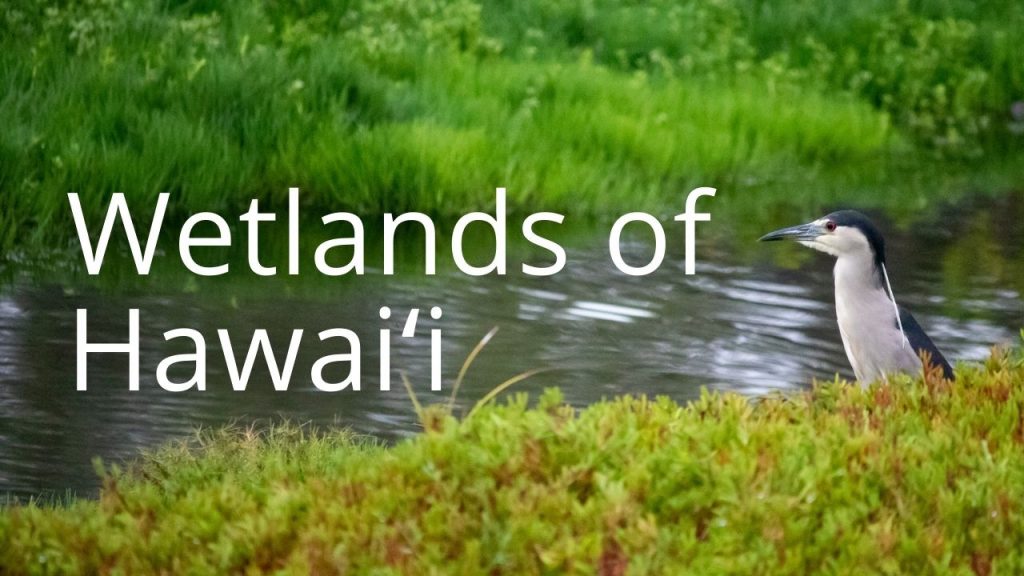 Wetlands of Hawaiʻi Story Map
Wetlands of Hawaiʻi Story Map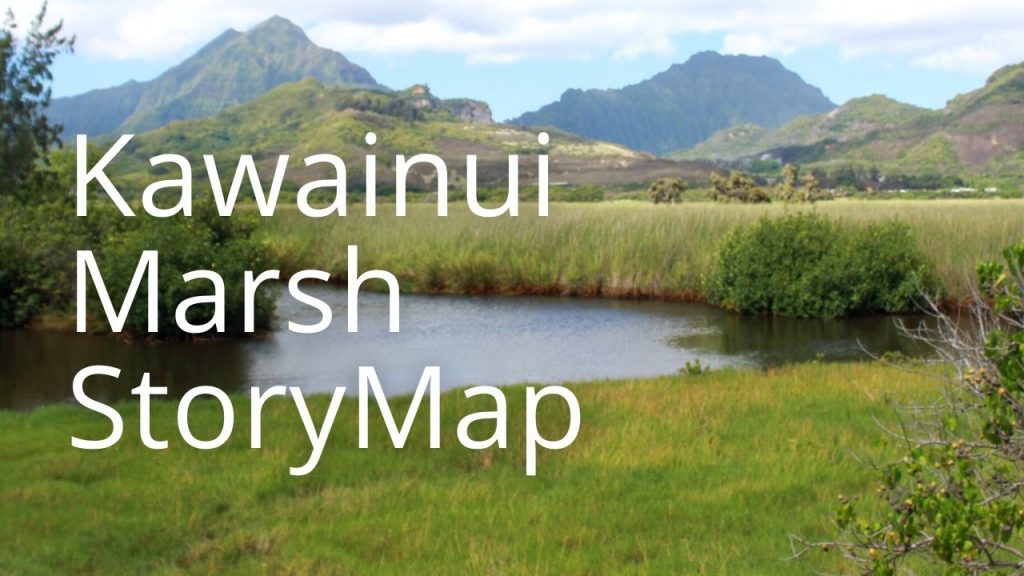 Kawainui Marsh Story Map
Kawainui Marsh Story Map Kawainui Marsh Virtual Tour
Kawainui Marsh Virtual Tour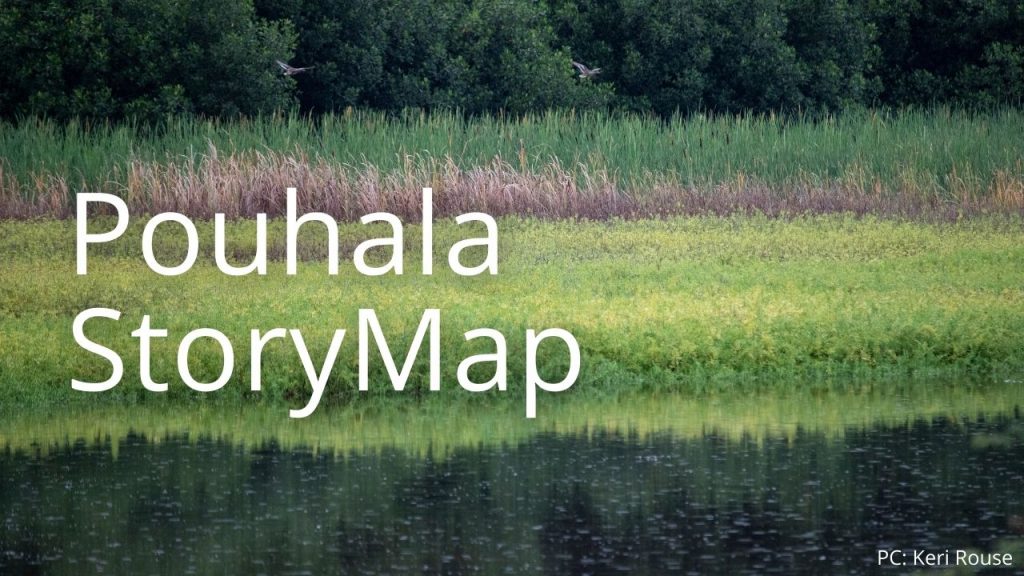 Pouhala Marsh Story Map
Pouhala Marsh Story Map


